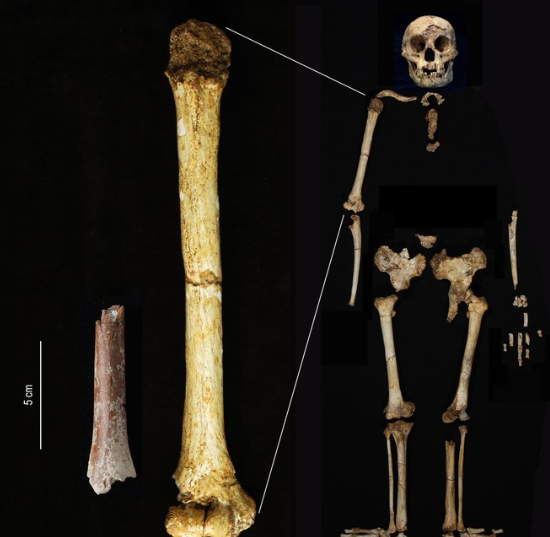Twenty years ago, scientists discovered fossils of an early human species on an Indonesian island. These small humans, standing about 3 1/2 feet tall, were nicknamed “hobbits.”
The discovery of a tiny arm bone suggests that an ancient human dubbed “hobbits” only shrank down to their diminutive size after they arrived on an Indonesian island a million years ago, scientists said. READ: https://t.co/AWQtEcID8d pic.twitter.com/HyhAKiLzI3
— PhilSTAR L!fe (@philstarlife) August 7, 2024
A new study now suggests that the ancestors of these hobbits were even shorter.
“We did not expect that we would find smaller individuals from such an old site,” said Yousuke Kaifu, co-author of the study, which was published on Tuesday in the journal Nature.
The original hobbit fossils date back to between 60,000 and 100,000 years ago. The new fossils were found at Mata Menge, a site about 45 miles from the cave where the first hobbit remains were discovered. The fossils, which were located on a ribbon-shaped, pebbly sandstone layer in a small stream, included exceptionally small teeth that likely belonged to two individuals.
In 2016, researchers began to suspect that these earlier relatives might be shorter than the hobbits after studying a jawbone and teeth from the new site. Further analysis of a tiny arm bone fragment and teeth confirmed that these ancestors were about 2.4 inches shorter and existed around 700,000 years ago.
Additional fossils of a hobbit on Flores, including a partial humerus found at Mata Menge. Compared here to the humerus of LB1 on the right. https://t.co/SHjwpDvgTy 📸Yousuke Kaifu pic.twitter.com/d6MFSSVFiK
— Paige Madison (@FossilHistory) August 6, 2024
“They’ve convincingly shown that these were very small individuals,” said Dean Falk, an evolutionary anthropologist at Florida State University who was not involved with the research.
The evolution and classification of the hobbits, known scientifically as Homo floresiensis, have been subjects of debate among researchers. Some scientists believe the hobbits may have descended from a taller human species called Homo erectus that lived in the region, while others think they might have originated from an even more primitive human ancestor. Homo floresiensis is thought to be one of the last early human species to go extinct.
Matt Tocheri, an anthropologist at Canada’s Lakehead University, highlighted the ongoing mystery about how the hobbits fit into the human evolutionary tree. “This question remains unanswered and will continue to be a focus of research for some time to come,” said Tocheri, who was not involved with the study.
Twenty years ago scientists discovered fossils of an early human species that stood about 3.5 feet (1.07 meters) tall on the Indonesian island of Flores.
🔗: https://t.co/fEyxTjffqS pic.twitter.com/7A7gEvJbRG
— Al Jazeera English (@AJEnglish) August 7, 2024
Further research and fossil discoveries are needed to determine the exact place of hobbits in human evolution.
Major Points:
- Scientists discovered fossils of an early human species, nicknamed “hobbits,” on an Indonesian island 20 years ago, with individuals standing about 3 1/2 feet tall.
- A new study suggests that the ancestors of these hobbits were even shorter, surprising researchers with this finding.
- The original hobbit fossils date back to between 60,000 and 100,000 years ago, while the newly found fossils at Mata Menge date back around 700,000 years and were discovered 45 miles from the original site.
- Analysis of a jawbone, teeth, and a tiny arm bone fragment from the new site indicates these earlier individuals were about 2.4 inches shorter than the later hobbits.
- The evolutionary origin and classification of the hobbits remain debated, with scientists unsure if they descended from Homo erectus or an even more primitive ancestor, necessitating further research and fossil evidence.
Al Santana – Reprinted with permission of Whatfinger News



